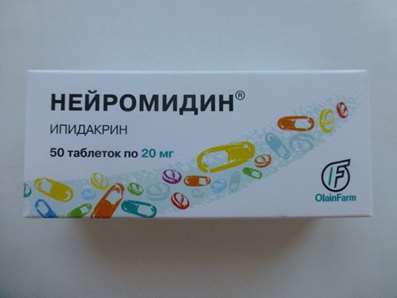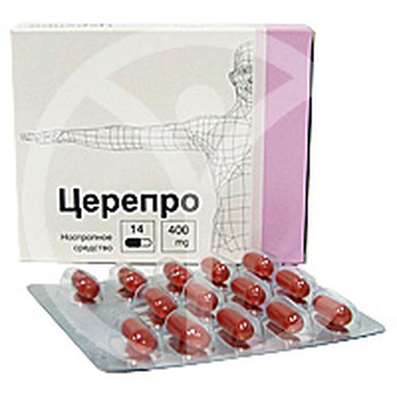Instruction for use: Deprefolt
I want this, give me price
Dosage form: coated tablets
Active substance: Sertaline*
ATX
N06AB06 Sertalin
Pharmacological groups:
Antidepressant
The nosological classification (ICD-10)
F32 Depressive episode: Adynamic subdepression; Astheno-adynamic subdepressive states; Asthenoadressive disorder; Astheno-depressive disorder; Asthenodepressive state; Astheno-depressive state; Major Depressive Disorder; Vyaloapatichesky depression with retardation; Double Depression; Depressive pseudodement; Depressive illness; Depressive mood disorder; Depressive disorder; Depressive mood disorder; Depressive state; Depressive disorders; Depressive syndrome; Depressive syndrome larviated; Depressive syndrome in psychoses; Depressed masks; Depression; Depression Depletion; Depression with the phenomena of inhibition within the framework of cyclothymia; Depression is smiling; Involutional depression; Involutionary melancholy; Involutional depression; Manic-depressive disorder; Masked Depression; Melancholic Attack; Neurotic depression; Neurotic depression; Shallow Depression; Organic depression; Organic depressive syndrome; Simple depression; Simple melancholic syndrome; Psychogenic depression; Reactive depression; Reactive depression with moderate psychopathological symptoms; Reactive depressive states; Reactive depression; Recurrent depression; Seasonal depressive syndrome; Severostatic depression; Senile Depression; Symptomatic Depression; Somatogenic depression; Cyclotymic depression; Exogenous depression; Endogenous depression; Endogenous Depressive Conditions; Endogenous Depression; Endogenous depressive syndrome
F33 Recurrent depressive disorder: Major depressive disorder; Secondary depression; Double Depression; Depressive pseudodement; Depressive mood disorder; Depressive disorder; Depressive mood disorder; Depressive state; Depressive syndrome; Depressed masks; Depression; Depression is smiling; Involutional depression; Involutional depression; Masked Depression; Melancholic Attack; Reactive depression; Reactive depression with moderate psychopathological symptoms; Reactive depressive states; Exogenous depression; Endogenous depression; Endogenous Depressive Conditions; Endogenous Depression; Endogenous depressive syndrome
F41.0 Panic disorder [episodic paroxysmal anxiety]: Panic state; Panic attack; Panic; Panic disorders
F42 Obsessive-compulsive disorder: Obsessive-compulsive syndrome; Obsessive compulsive states; Obsessive-compulsive syndrome; The Obsession Syndrome; The obsession neurosis; Obsessive-compulsive neurosis; Obsessions
F43.1 Post-traumatic stress disorder: Combat fatigue; Catastrophe Syndrome; The survivor's syndrome; Traumatic isolation; Traumatic neurosis; Traumatic syndrome; Post-Traumatic Stress Disorder
Composition and release form
Tablets, coated with a coating.
sertraline hydrochloride 55.95 mg
(in terms of sertraline - 50 mg)
sertraline hydrochloride 111.9 mg
(in terms of sertraline - 100 mg)
auxiliary substances: silicon colloidal dioxide; ICC; croscarmellose sodium; copovidone; lactose monohydrate; magnesium stearate; Opadry white Y-5-7068, hypromellose 3cP, hydroxypropylcellulose, titanium dioxide, macrogol / PEG 400, hypromellose 50cP
in a blister of 10 pcs .; in a pack of cardboard 2 blisters.
Description of dosage form
Oval, biconcave, coated tablets of white or almost white color, with risk on one side, on the other side - with side risks and with engraving "50" - for tablets of 50 mg and "100" for tablets of 100 mg.
Pharmachologic effect
Pharmacological action - antidepressant.
Pharmacodynamics
Selectively inhibits the reuptake of serotonin. Sertraline has a very weak effect on the re-uptake of norepinephrine and dopamine. In therapeutic doses, sertraline blocks the seizure of serotonin in human platelets. It has no stimulating, sedative or anticholinergic action. Sertraline does not have an affinity for muscarinic (cholinergic), serotonergic, dopaminergic, adrenergic, histaminergic, GABA or benzodiazepine receptors.
Antidepressant effect is observed at the end of 2 weeks of regular sertraline intake, whereas maximum effect is achieved only after 6 weeks. Unlike tricyclic antidepressants, sertraline does not increase body weight. Sertraline does not cause mental or physical drug dependence.
Pharmacokinetics
Absorption of sertraline from the gastrointestinal tract is significant, but it is slow. Cmax in the blood plasma is reached after 4,5-8,4 hours after taking the drug inside. The equilibrium concentration of sertraline in blood plasma is achieved within 1 week with a single daily intake. Bioavailability during admission during meals increases by 25%, while the time to achieve Cmax is shortened.
The total binding of sertraline to plasma proteins is 98%. The volume of distribution is> 20 l / kg.
Sertraline undergoes intensive metabolism during the "first passage" through the liver, undergoing N-demethylation. Its main metabolite, N-desmethylsertralin, is less active than the parent compound. Metabolites are excreted in urine and feces in equal amounts. About 0.2% of sertraline is excreted by the kidneys unchanged. T1 / 2 - 22-36 h and does not depend on age or gender. For N-desmethylsertraline, this value is 62-104 hours.
T1 / 2 and AUC increase if liver function is impaired. Regardless of the severity of renal failure, the pharmacokinetics of sertraline does not change with its constant application.
Sertraline penetrates into breast milk. Data on its ability to pass through the hematoplacental barrier is not present.
Sertraline is not dialyzed.
Indications for the Deprefolt
depression of different etiology (treatment and prevention);
obsessive-compulsive disorder (OCD);
panic disorder (with or without agoraphobia);
post-traumatic stress disorder (PTSD).
Contraindications
hypersensitivity to the active substance or other ingredients included in the preparation;
joint use of sertraline and MAO inhibitors (when replacing one drug with another, refrain from taking antidepressants within 14 days);
joint use of sertraline with tryptophan or fenfluramine;
unstable epilepsy;
children's age till 6 years.
Carefully:
organic brain diseases (including delayed mental development);
manic states;
epilepsy;
hepatic and / or renal insufficiency;
decreased body weight;
children age over 6 years.
Application in pregnancy and lactation
There are no controlled results of the use of sertraline in pregnant women, so it is necessary to prescribe them only if the expected benefit for the mother exceeds the potential risk for the fetus. Women of reproductive age who are expected to be prescribed sertraline should be recommended to use effective contraceptives. Sertralin is found in breast milk. The use of the drug during breast-feeding is not recommended. If treatment is still necessary, then breast-feeding should be stopped.
Side effects
From the side of the central nervous system: possible - dizziness, drowsiness, headache, insomnia, weakness, increased sweating, tremor, hypomania, mania, extrapyramidal disorders, anxiety, agitation, visual impairment.
From the cardiovascular system: rarely - redness of the skin with a feeling of heat or heat, a feeling of palpitations.
On the part of the digestive system: dry mouth, decreased appetite, dyspeptic disorders (flatulence, nausea, vomiting, diarrhea), abdominal pain, weight loss.
From the side of metabolism: hyperprolactinemia, galactorrhea.
On the part of the reproductive system: rarely - menstrual irregularities, ejaculatory disorders, decreased libido.
Allergic reactions: rarely - fever, skin rash, hives or itching, erythema multiforme.
When treatment with sertraline is discontinued, rare cases of withdrawal syndrome are described. There may be paresthesia, hypoesthesia, symptoms of depression, hallucinations, aggressive reactions, psychomotor agitation, anxiety or symptoms of psychosis that can not be distinguished from the symptoms of the underlying disease.
Interaction
Inhibitors of monoamine oxidase (MAOI). There are serious complications with the simultaneous use of sertraline and MAOI, including selective-acting (selegiline) MAOI and a reversible type of action (moclobemide). Perhaps the development of serotonin syndrome. Similar complications, sometimes fatal, occur when MAOI is prescribed against a background of treatment with antidepressants that depress the neuronal capture of monoamines or immediately after their withdrawal.
With the simultaneous use of selective inhibitors of reverse neuronal seizure of serotonin and MAOA, hyperthermia, rigidity, myoclonus, lability in the autonomic nervous system (rapid fluctuations in the parameters of the respiratory and cardiovascular system), changes in mental status, including increased irritability, marked agitation, confusion in some cases may go into a delirious state or to whom.
Drugs that depress the central nervous system and ethanol. The combined use of sertraline and substances depressing the central nervous system requires close attention; It is also forbidden to drink alcohol during treatment with sertraline.
Derivatives of coumarin. When they are co-administered with sertraline, there is a significant increase in prothrombin time - in these cases it is recommended that prothrombin time be monitored at the beginning of treatment with sertraline and after it is discontinued.
Pharmacokinetic interaction
Sertraline binds to blood plasma proteins. Therefore, it is necessary to consider the possibility of its interaction with other drugs that bind to proteins (for example, diazepam, tolbutamide and warfarin).
Cimetidine: simultaneous use significantly reduces the clearance of sertraline.
LS metabolized by isoenzyme 2D6 cytochrome P450: prolonged treatment with sertraline at a dose of 50 mg / day is accompanied by an increase in the concentration of desipramine.
LS, metabolized by other enzymatic systems of cytochrome P450. Experiments on the in vitro interaction showed that the isoenzyme CYP3A3 / 4 beta-hydroxylation of endogenous cortisol, as well as the metabolism of carbamazepine and terfenadine, do not change with the long-term administration of sertraline at a dose of 200 mg per day. The concentration in the blood plasma of tolbutamide, phenytoin and warfarin in the long-term administration of sertraline in the same dose also does not change. Thus, it can be concluded that sertraline does not inhibit isoenzyme CYP 2C9.
Sertraline does not affect the concentration of diazepam in the serum, indicating that there is no inhibition of isoenzyme CYP 2S19. According to in vitro studies, sertraline has virtually no effect or minimally inhibits isoenzyme CYP 1A2.
Lithium. The pharmacokinetics of lithium does not change with the concomitant administration of sertraline. However, when they are used together, a tremor is more common. As well as the appointment of other selective inhibitors of reverse neuronal seizure of serotonin, the joint use of sertraline with drugs that affect serotonergic transmission (eg, lithium) requires increased caution.
Drugs affecting serotonergic transmission. When replacing one inhibitor of neuronal seizure of serotonin with another, there is no need for a "period of washing". However, care must be taken when changing the course of treatment. Tryptophan or fenfluramine should be avoided together with sertraline.
Induction of microsomal liver enzymes. Sertraline causes minimal induction of liver enzymes. Simultaneous administration of sertraline and antipyrine at a dose of 200 mg leads to a significant decrease in T1 / 2 antipyrine, although this occurs in only 5% of cases.
Atenolol: with the co-administration of sertraline does not change its β-adrenergic blocking effect.
Glibenclamide and digoxin: when sertraline was administered in a daily dose, 200 mg of drug interaction with these drugs was not detected.
Dosing and Administration
Inside.
Depression and OCD: adults, the initial dose is 50 mg once a day, morning or evening. The daily dose can be increased gradually, not earlier than after 1 week, from 50 mg to the maximum daily dose of 200 mg (50 mg per week).
Children: from 6 to 12 years of age, the initial dose is 25 mg once a day, morning or evening; After 1 week, you can increase the dose to 50 mg once a day; from 12 to 17 years, the initial dose - 50 mg once a day, morning or evening; daily dose can be gradually, not earlier than after 1 week, increase from 50 mg to a maximum daily dose of 200 mg.
Panic disorder and PTSD: the initial dose is 25 mg once a day, in the morning or in the evening. After 1 week, you can increase the dose to 50 mg sertraline 1 time per day, and then gradually, not earlier than 1 week later, the daily dose can be gradually increased from 50 mg to a maximum daily dose of 200 mg.
A satisfactory therapeutic result is achieved usually after 7 days from the start of treatment. To achieve the full therapeutic effect requires regular use of the drug for 2-4 weeks. In patients with obsessive-compulsive disorders, it may take 8-12 weeks to achieve a good result. The minimal dose providing the therapeutic effect, is preserved in the future as a supportive (prophylactic).
Elderly patients
No dosage adjustment is required.
Patients with impaired hepatic function
In case of severe impairment of liver function, the dose of the drug should be reduced or the intervals between doses should be increased.
Patients with impaired renal function
In patients with impaired renal function, no special dose is required (see "Special instructions").
Overdose
Symptoms: severe symptoms with an overdose of sertraline not detected even with the appointment of the drug in large doses. However, with simultaneous administration with other drugs or ethanol, severe poisoning can occur.
Overdose can cause serotonin syndrome with nausea, vomiting, drowsiness, tachycardia, agitation, dizziness, psychomotor agitation, diarrhea, increased sweating, myoclonus and hyperreflexia.
Treatment: there are no specific antidotes. It requires intensive maintenance therapy and constant monitoring of vital body functions. It is not recommended to induce vomiting. The introduction of activated carbon can be more effective than gastric lavage. It is necessary to maintain airway patency. Sertraline has a large volume of distribution, in connection with this, increased diuresis, dialysis, hemoperfusion or blood transfusion may not be successful.
Special instructions
Sertraline should not be administered in conjunction with MAOI, nor within 14 days after discontinuation of MAOI treatment. Similarly, after the withdrawal of sertraline within 14 days, no MAOI is prescribed.
In patients undergoing electroconvulsive therapy, sufficient experience with sertraline is absent. The possible success or risk of such a combined treatment has not been studied.
Patients suffering from depression are at risk for suicide attempts. This danger persists until the development of remission. Therefore, from the beginning of treatment and until the optimal clinical effect is achieved, patients should be provided with permanent medical supervision.
With long-term use in rare cases (0.8% of observations), there is an asymptomatic increase in the activity of transaminases in the blood serum. Abolition of the drug leads to a normalization of the activity of liver enzymes.
During treatment with sertraline, transient hyponatremia may occur. It often develops in elderly patients, as well as when taking diuretics or a number of other drugs. A similar side effect is associated with the syndrome of inadequate secretion of antidiuretic hormone.
The use of the drug, as a rule, is not accompanied by a violation of psychomotor functions. However, its use simultaneously with other drugs can lead to disruption of attention and coordination of movements. Therefore, during the treatment with sertraline, it is not recommended to operate vehicles, special equipment or engage in activities involving an increased risk.
Storage conditions for Deprefolt
At a temperature of no higher than 25 ° C.
Keep out of the reach of children.
Shelf life of Deprefolt
3 years.
Do not use after the expiry date printed on the package.

 Cart
Cart





